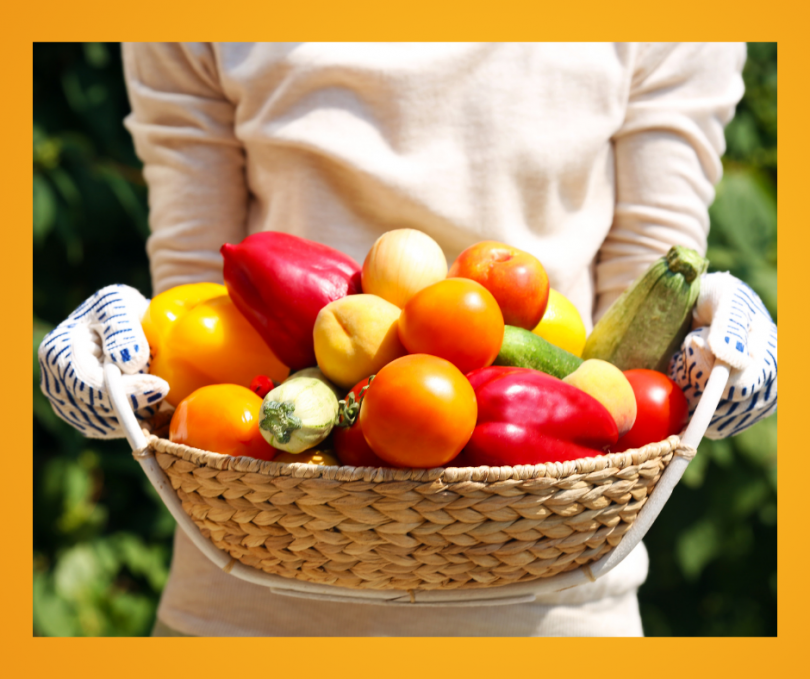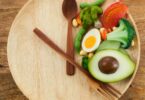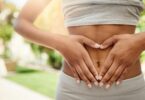What do celebrities like Susan Sarandon, Whoopi Goldberg, Lena Dunham and Daisy Ridley have in common with one in ten women all over the world?
They have been diagnosed with endometriosis.
Endometriosis
Medically speaking, endometriosis is an estrogen-dependent pelvic disease characterized by implantation and growth of endometrial tissue outside the uterine cavity. It affects about 10–15% of women of reproductive age. The commonest symptoms of the disease are pelvic pain and infertility (Scutiero et al, 2017).
Pain
For many endometriosis patients, experiencing severe pain on a regular basis comes not only with physical impairment. It also puts considerable psychological and emotional pressure on every patient. In addition to this, regular reduction in performance caused by pain can often lead to further problems in work and private life. Unfortunately, diagnostic delay is considerable due to a lack of non-invasive reliable diagnostic testing, and also due to the lack of awareness in medical professionals because of the often non-specific symptoms with which women are presenting to their doctors.
When all you know is pain you don’t know that that is not normal. It is not a woman’s lot to suffer, even if we’ve been raised that way.
It is not OK to miss a part of your life because of pain and excessive bleeding.
It is not OK to be bed-ridden for two-to-three days a month
It is not OK to pain during sex
It is not OK to have major bloating or nausea.
Ms Susan Sarandon
Self-empowerment through self-management
Even when diagnosis is finally there, the disease is chronic and success of treatment is limited. Many women want to be in control of this disease themselves and they are looking for tools to do so. Self-management is an important empowering tool. According to an Australian national online survey, up to 76% of women with endometriosis use self-management strategies, consisting of diverse self-care and lifestyle choices, such as meditation, exercise and nutrition (Armour et al., 2019).
I have to really be diligent about getting my sleep, getting eight hours a night, limiting alcohol and sugar, and getting acupuncture once a week,
ESPN host Molly Qerim in a 2018 interview for the Endometriosis Foundation of America’s blog The Blossom
Self-empowerment starts with knowledge
Even though you may usually not be a big fan of biochemistry, learning more about the molecular mechanisms contributing to endometriosis and endometriosis-related pain may help you, too, to improve your wellbeing considerably.
Prof Annemiek Nap from the Netherlands admits that unfortunately, the pathogenesis of endometriosis has not been fully elucidated. The most widely accepted theory is that of retrograde menstruation (Huijs and Nap, 2020). According to this theory, endometriosis may occur when menstrual debris is transported through the tubes and enters the abdominal cavity, where it can attach and adhere to the peritoneal lining (Sampson, 1927). However, not all women with retrograde menstruation suffer from endometriosis and it is thought that different genetic, immunological, environmental, and hormonal factors may be involved in the development of endometriosis as well (Huijs and Nap, 2020).
Oxidative stress
One of these factors is oxidative stress. It is defined as an imbalance between reactive oxygen species (ROS) and antioxidants. Reactive oxygen species are intermediaries produced by normal metabolism and are inflammatory mediators known to promote inflammation. Most cells have developed a range of protective antioxidants, ranging from enzymes to common nutrients such as vitamin E and vitamin C. These antioxidants can limit ROS production, inactivate them, and even repair cell damage. However, when the balance between ROS production and antioxidant defense is disrupted, oxidative stress may occur and further promote endometriosis (Scutiero et al, 2017). Research has shown that the severity of endometriosis is associated with oxidative stress levels in patients (Amreen et al, 2019) and there seems to be a vicious cycle in which endometriosis-related inflammation promotes oxidative stress and oxidative stress in turn triggers progression of endometriosis (Huijs and Nap, 2020).
The lead symptom of pain, too, seems to be highly influenced by oxidative stress
Professor Nalini Santanam, head of a working group at Marshall University in Huntington (West Virginia / USA), has examined the influence that oxidative stress can have on the sensation of pain in endometriosis patients. The research was published in the international journal “Pain” in 2015.
What the scientists found could have a major impact on the lives of those affected: It seems that lipoproteins in the peritoneal fluid of patients altered by oxidative stress (oxidized lipoproteins) are a particularly strong stimulus for pain sensors near endometriomas. That means that oxidative stress (often caused by endometriosis-related inflammation) directly leads to increased pain!
Antioxidants? Antioxidants!
Remember that the antagonists of oxidative stress were compounds called antioxidants? Well, the good news is that it seems that supplying more antioxidants than usual to endometriosis patients is associated with pain relief (if not for all, then at least for many women). Prof Santanam had been able to show this as early as 2012. Together with coworkers, she had conducted a study to assess whether antioxidant supplementation could ameliorate endometriosis associated symptoms. In a randomized, placebo controlled trial they supplemented women with pelvic pain and endometriosis with antioxidative vitamins (vitamins E and C). The researchers assessed pain scales at baseline and bi-weekly and measured inflammatory markers in the peritoneal fluid. The results indicated that, after treatment with antioxidants, chronic pain (“everyday pain”) improved in a staggering 43% of patients in the antioxidant treatment group as compared to the placebo group. In the treatment group, dysmenorrhea (“pain associated with menstruation”) and dyspareunia (“pain with sex”) decreased in 37% and 24% patients, respectively. In the placebo group, dysmenorrhea associated pain decreased in only 4 patients and no change was seen in chronic pain or dyspareunia. There was also significant decrease in peritoneal fluid inflammatory markers after antioxidant therapy compared to patients not on antioxidants (Santanam et al, 2012).
While the number of participants in the study was not as high as we would like it to be and certainly bigger studies are needed to learn more about efficacy, based on these results, and given that no side-effects were reported, every woman suffering from endometriosis-related pain can be advised to give nutritional self-management a try.
The researchers Huijs and Nap, who analysed efficacy of orthomolecular treatment choices in endometriosis, summarized in their review article from 2020:
All nutrients that turned out to be effective in suppressing endometriosis-associated pain had anti-inflammatory or antioxidative actions
Following an anti-inflammatory diet and including plenty of natural sources of antioxidants such as fruit and veggies (vitamin C), nuts and seeds (vitamin E), will be an excellent first step.
Many women with endometriosis throughout the world confirm that nutritional self-management with ample antioxidants and anti-inflammatory dietary choices can contribute to pain management and general well-being. For those of you who are looking for a simple option to support self-management, it is good to know that meanwhile there are even special supplements available for dietetic management of endometriosis.
References
Amreen S, Kumar P, Gupta P, Rao P. Evaluation of Oxidative Stress and Severity of Endometriosis. J Hum Reprod Sci. 2019 Jan-Mar;12(1):40-46. doi: 10.4103/jhrs.JHRS_27_17. PMID: 31007466; PMCID: PMC6472204.
Armour M, Sinclair J, Chalmers KJ, Smith CA. Self-management strategies amongst Australian women with endometriosis: a national online survey. BMC Complement Altern Med. 2019 Jan 15;19(1):17. doi: 10.1186/s12906-019-2431-x. PMID: 30646891; PMCID: PMC6332532.
Huijs E, Nap A. The effects of nutrients on symptoms in women with endometriosis: a systematic review. Reprod Biomed Online. 2020 Aug;41(2):317-328. doi: 10.1016/j.rbmo.2020.04.014. Epub 2020 May 15. PMID: 32600946.
Lete I, Mendoza N, de la Viuda E, Carmona F. Effectiveness of an antioxidant preparation with N-acetyl cysteine, alpha lipoic acid and bromelain in the treatment of endometriosis-associated pelvic pain: LEAP study. Eur J Obstet Gynecol Reprod Biol. 2018 Sep;228:221-224. doi: 10.1016/j.ejogrb.2018.07.002. Epub 2018 Jul 6. PMID: 30007250.
Ray K, Fahrmann J, Mitchell B, Paul D, King H, Crain C, Cook C, Golovko M, Brose S, Golovko S, Santanam N. Oxidation-sensitive nociception involved in endometriosis-associated pain. Pain. 2015 Mar;156(3):528-39.
Sampson JA. Peritoneal endometriosis due to the menstrual dissemination of endometrial tissue into the peritoneal cavity. American Journal of Obstetrics and Gynecology, 1927; 14(4): 422-469.
Santanam N, Kavtaradze N, Murphy A, Dominguez C, Parthasarathy S. Antioxidant supplementation reduces endometriosis-related pelvic pain in humans. Transl Res. 2013 Mar;161(3):189-95. doi: 10.1016/j.trsl.2012.05.001. Epub 2012 May 31. PMID: 22728166; PMCID: PMC3484190.
Scutiero G, Iannone P, Bernardi G, Bonaccorsi G, Spadaro S, Volta CA, Greco P, Nappi L. Oxidative Stress and Endometriosis: A Systematic Review of the Literature. Oxid Med Cell Longev. 2017;2017:7265238. doi: 10.1155/2017/7265238. Epub 2017 Sep 19. PMID: 29057034; PMCID: PMC5625949.







